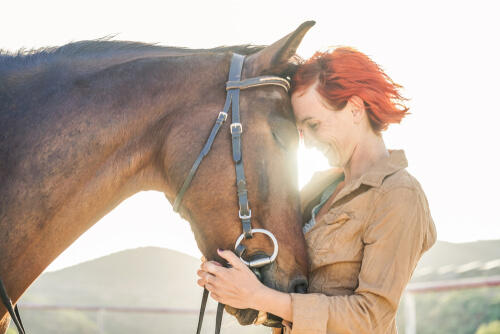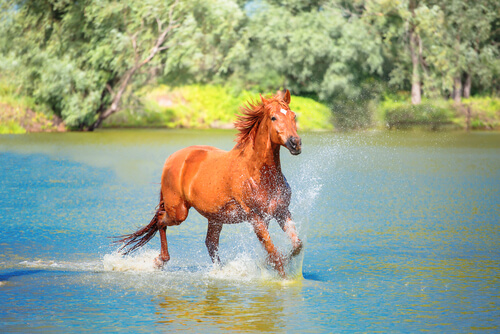Pets
Can you interpret the emotions of other animals?
For 5,000 years, horses have been allies always present in the life of the human, in times of war and peace. Before the development of the steam locomotive in the early nineteenth century, the only way to travel on land, faster than the human step, was on horseback. Thus, the history of the horse is the history of civilization itself.
We can say that the horse is the most humanized animal in the world. And even today,the link between men and horses seems unbreakable and imperishable.
Horses are pack animals, known for tuning in to human emotions. Their responses often reflect the behaviors of those around them.
There is evidence to suggest that horses can come to recognize human emotions.
Can horses “read” people’s emotions?
Often horses reflect the behaviors and emotions of their surroundings. In fact, their behavior before a person can serve as an incredibly accurate barometer of human relationships. This feature has been successfully used in equine therapies.
Unlike people, horses do not lie to themselves or to each other. The natural modes of communication for horses are body language and spirit status.
Although many people have no idea what messages they are sending, the horses do not seem to have a problem identifying them. Every time a human appears, the horse evaluates it as safe, dangerous or without consequences.
Empathy in horses
The capacity for empathy is a general psychological mechanism that plays a fundamental role in cooperative and social behavior. The degree to which an individual feels empathy in response to the pain or pleasure of another depends on the situation.
Until recently, researchers considered empathy and other higher order cognitive processes as the exclusive domain of human psychology. In the last decade, the results of scientific studies have blurred the line between humans and non-human animals.
Empathy seems to be stronger when “the other” is socially close. Horses are susceptible to “emotional contagion”and this state can affect the immediate and future behavior of an animal.
How do you express empathy in horses?
Internal states are difficult to study because they cannot be observed directly. So far, conjectures are made by behavioral observation.
Experts consider emotional reflexes, motor mimicry and synchronized movements as evidence of primordial empathy. Empathic responses are usually unconscious and immediate.
Examples that have been used as evidence of animal empathy include contagious yawning, synchronized movement and gaze tracking.
Contagious yawning is a well-studied example of motor imitation that has been linked to empathy between humans, nonhuman primates and carnivores. Baboons even accurately mimic different types of yawns.
In a recent study that compared domestic and Przewalski horses, researchers reported that yawning occurred more frequently in mature stallions and was associated with social and environmental stress, but not empathy.
Synchronized movement and gaze tracking are commonly observed in horses. However, there are still no systematic studies of these imitative motor patterns.
Do horses have self-awareness?
Various studies have linked self-awareness with empathy. That is, empathy requires the cognitive ability to distinguish itself. Humans, some nonhuman primates, and others like elephants and dolphins show self-knowledge through the mirror test.
The mirror test involves applying a paint mark on the animal’s body or face. Animals with self-recognition will look at the mirror image and then touch the mark on their own face.
Those without self-recognition will touch the mark on the mirror image or react to the image in some other way. This test is not conclusive in horses.
Empathy in horses as an advantage
As a prey animal, the horse depends on escape as its main method of survival. Their natural predators are large animals such as pumas, wolves or bears, so their ability to overcome these predators is essential.
In conditions of freedom, horses depend on the herd to survive. It is believed that they have developed special skills to read situations based on the attitude and physical expressions of the subjects in their environment.
Thus, horses have developed a very fast response time. A prey animal must react instantly to a perceived predator in order to survive.
Like primates, horses share many of the social and ethological characteristics that are believed to favor the ability to experience empathy.
In order not to spend their entire lives running away, horses have developed skills to discern between what is harmful and what is harmless.
The body language of a horse is exclusive to the equine species. As a highly social animal, The horse communicates his emotions and intentions to his packmates through vocalization and body language. Thus, they will naturally read their packmates, including humans.


